The fresh produce industry has a problem with waste. In fact fruit and veg produce more than any other sector, according to research. That made HDV Groentesnijbedrijf from Losser, the Netherlands, feel uncomfortable and wasteful, even before waste became a social theme.
Five years ago, they put their own kitchen under the microscope, and they noticed much could be gained. They developed a new line of pickled raw vegetables and veggie spreads as an addition to their existing lines of fresh raw vegetables and vegetable mixes. Nowadays, they cut the entire white cabbage: the juicy leaves are used in vegetable mixes and as raw vegetables, the heart and the tougher leaves as pickled raw vegetables and veggie spreads. That has resulted in a waste reduction of nearly 98 per cent, but it’s even better than that - these new products are a sustainable addition to the assortment, and they’re a convenience solution for the food service industry.
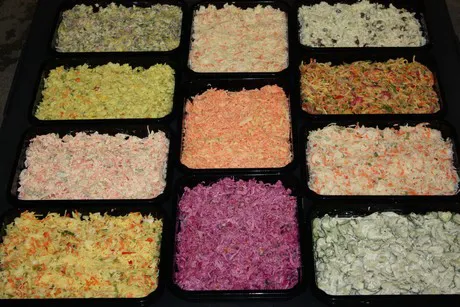
The figures don’t lie: “Fifteen per cent is wasted during primary production, eight per cent during trade and processing, five per cent in retail and catering, and ten per cent is wasted by consumers at home,” says Bianca Horenberg of HDV Groentesnijbedrijf. “So yes, we also contribute to waste, and we had to do something about that.
Everything we create is ready-to-eat. We cut fresh products, and that means we had a major residual flow of cutting waste, about 25 to 30 per cent. Moreover, our products have a short shelf life, four days at most, which means we deal with a lot of waste, as do our customers. Our major challenge was to create a product that has a longer shelf life and that is flavourful, but also has a fresh experience and remains authentic. So without artificial additives, it wouldn’t fit our company.
For our fresh products, we don’t work with gamma radiation, for example, or gas mixtures to extend shelf life. Customers ask for an eight-day shelf life, but why would you? Don’t you want to sell a fresh product? We’re quite self-willed in that regard, and we don’t make concessions to quality. We ensure supply of first-class vegetables that are processed within a closed and conditioned supply chain into all possible ready-to-use portions of 50 grammes to 5,000 kilograms. The fresh materials are supplied at night and processed into semifinished or end product and delivered to our buyers within 12 to 24 hours. Because of that, shelf life of the fresh products is limited to four or five days, but that’s the only restriction we ‘impose’ on our buyers. The customers decide everything else about the product.”
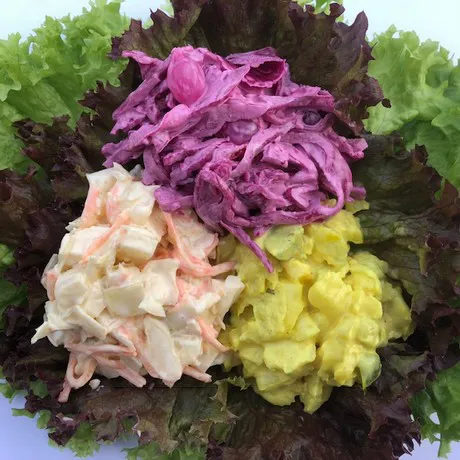
So instead of artificially extending shelf life, HDV developed a line of raw vegetables and veggie spreads that also combated the waste problem. Because of the new product lines, they reduced their waste flows by more than 97 per cent, and they also contribute to fight decay further along in the supply chain. The new products are now given a use by date of +20 days, and although a longer shelf life is possible, 20 days is more than enough for the market the company supplies.
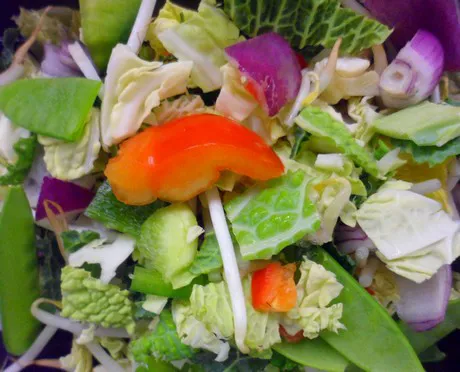
HDV’s clientele is extensive, from industrial kitchens and wholesalers to food industry. They can supply all possible compositions, sizes and packaging as per the customer’s wishes, either as semifinished product or as end product. They also supply smaller specialist shops, such as the fishmonger’s that discovered their pickled raw vegetable line and now buys 40 buckets of three kilos every week. The flavour and shelf life offer new opportunities on the market, according to Bianca. “We see opportunities in aviation and shipping. In the air, the sweetness is lost, which results in a completely different flavour experience, and that’s exactly where our raw vegetables and veggie spreads score highly. At sea, the non-perishable salads are ideal, because not much can happen to them. We also see new applications and markets for our veggie spreads, these are an excellent replacement for butter.”
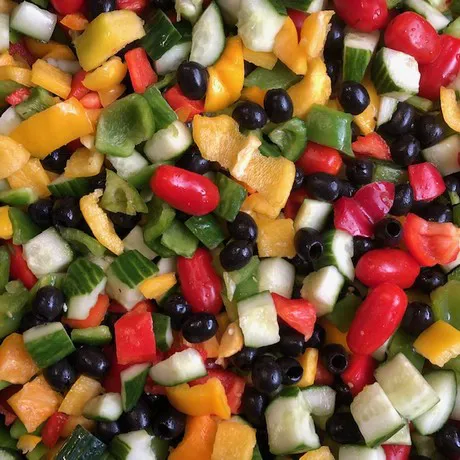
For the veggie spreads, the vegetables are cut very finely so that the vegetables become spreadable. “In the past, we had to throw out the tough outer leaves and the heart of white cabbage, but for this new line we can actually use everything, and our waste flow is only two to three per cent now,” Bianca says.
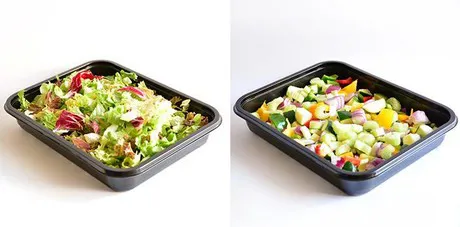
To give the new products a longer shelf life, a processing process as natural as possible has been developed, and they’ve managed to exclude the Listeria risk. Vegetables are placed in a bath of water, salt and vinegar for 24 hours, so that the pH is so low, Listeria bacteria can’t survive, which is a spearhead within food safety. After the bath, the vegetables are mixed with a sweet sauce that brings the flavour back into balance. “Because we don’t heat, we maintain the fresh experience. Besides, we want to keep the process as natural as possible. We hardly use preservatives or other additives for shelf life during the bath nor in the sauce, the pH and salt do all the work. The sauces we use also consist of natural ingredients, and the white sauce is even gluten free, which is another important distinguishable factor nowadays.”

Working out the process took quite some doing, it took five years of development. “In the end, flavour is what convinces consumers. We did a lot of tests and adjusted the proportions of sweet, sour and salt each time. One day we had our eureka-moment, and we started testing it on our customers. That’s the fun part of the process. Our customers have a lot of knowledge about flavour and health. Due to our good cooperations, we can exchange tips and tricks. After all, we all have the same goal: a good product with a shelf life as long as possible without having to add weird things to your product.”
The mutual interest has ensured good sales of the new products right from the start, in part because adding these values doesn’t mean customers have to pay more. The extra steps in the process didn’t require extensive investments, after all. Customers are enthusiastic about HDV’s new product line, according to Bianca. One of these recently even entered the German market with it. “If that goes well, it would naturally create a wonderful new market. Fortunately, we have a very good team of our own, well-trained people. We can scale up in the middle of the day by 5,000 to 6,000 kilos, so we can handle quite a bit of production,” Bianca concludes.
More information:
HdV Groentesnijbedrijf
Industriestraat 5
7582CR Losser
T:0535360715
F: 0535360725
B.Horenberg@hdv-groentesnijbedrijf.nl
www.hdv-groentesnijbedrijf.nl
